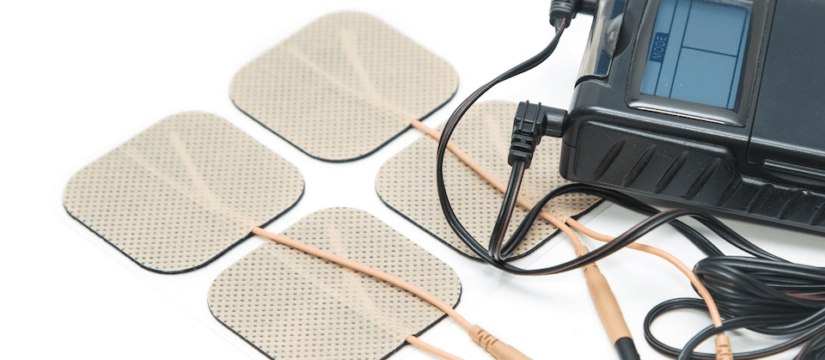
Electrical stimulation therapy like NMES (Neuromuscular Electrical Stimulation) or TENS (Transcutaneous Electrical Nerve Stimulation) can help you retrain and strengthen your muscles as well as provide instant pain relief.
TENS targets your sensory nerves while NMES stimulates motor nerves, or those nerves responsible for helping you move. The surface-level tingling sensation that you feel with TENS is meant to reach your brain before pain signals and therefore shut the gate on pain. Each of your nerves fires at different frequencies depending on if they are trying to move a muscle or sense the environment around you.
You need both types of nerves to help you feel and to help you move. Each type of electrical stimulation device will affect your body’s distinct nerve type.
NMES Explained
NMES uses electrical currents to stimulate and help you tighten your muscles. When set to a high intensity, your muscles contract. The higher the intensity, the more contraction your muscle will achieve. And the amount of intensity you tolerate is subjective from person to person, so only increase the intensity to as much as you need to meet your goals.
You can apply multiple electrodes to different areas of your body to produce a specific contraction and movement. Stimulate a single or group of muscles to help with muscle reeducation and improve your ability to control your body.
NMES therapy helps your muscles tighten and relax, which in turn helps you to:
- Build strength
- Prevent atrophy
- Improve range of motion
- Limit muscle spasms
- Reduce spasticity
The small and portable units can be used in the clinic or at home with PT supervision.
How does a NMES unit work?
With the electrodes attached to your skin and the NMES unit on, you will slowly increase the intensity of the electrical current as high as you can tolerate it as it begins to contract and relax your muscles.
You have two types of muscle fibers in your body used for posture or for power. And NMES can help you improve your postural muscles, which help to hold you up day, and your power muscles, which help you when you need a quick force like lifting or sneezing.
TENS Explained
Transcutaneous Electrical Stimulation (TENS) is used to help reduce pain and is usually produced by a small device. The devices are typically battery-operated, allowing you to keep them in your pocket or purse and carry them throughout your day.
Electrodes with sticky adhesive backs are placed over clean, dry skin and usually on skin with very little hair. The electrodes are connected to your device by a wire and set at a specific frequency and intensity to provide you with a therapeutic effect.
How does a TENS unit work?
A TENS unit is prescribed to manage acute and chronic pain due to soft injury, nerve damage, or muscle pain. Stimulation of electrical currents targets superficial nerves in your skin to purposely block pain signals to your brain.
If you use a high enough intensity, you can create muscle contractions, but the intention of a TENS unit is to avoid the painful stimuli and set it at a comfortable level to relieve pain.
The limited side effects and the ability to avoid using medications for pain relief draw people to use this device.
